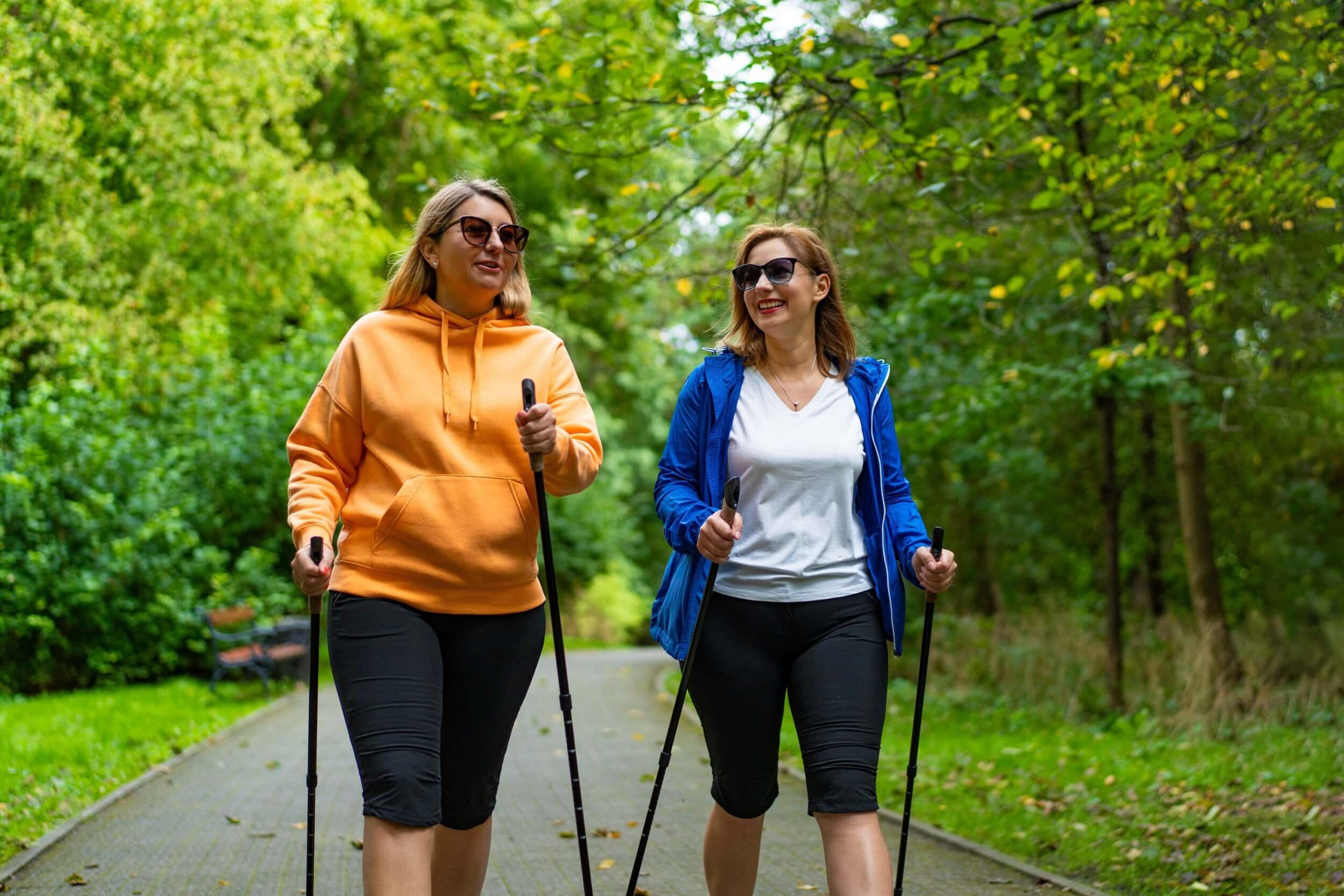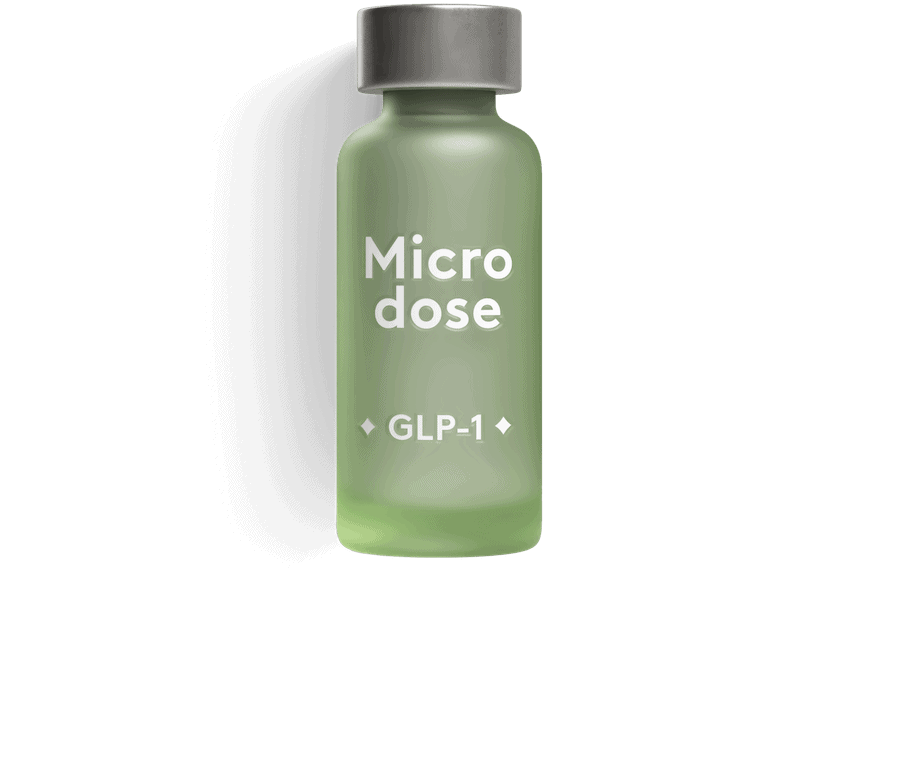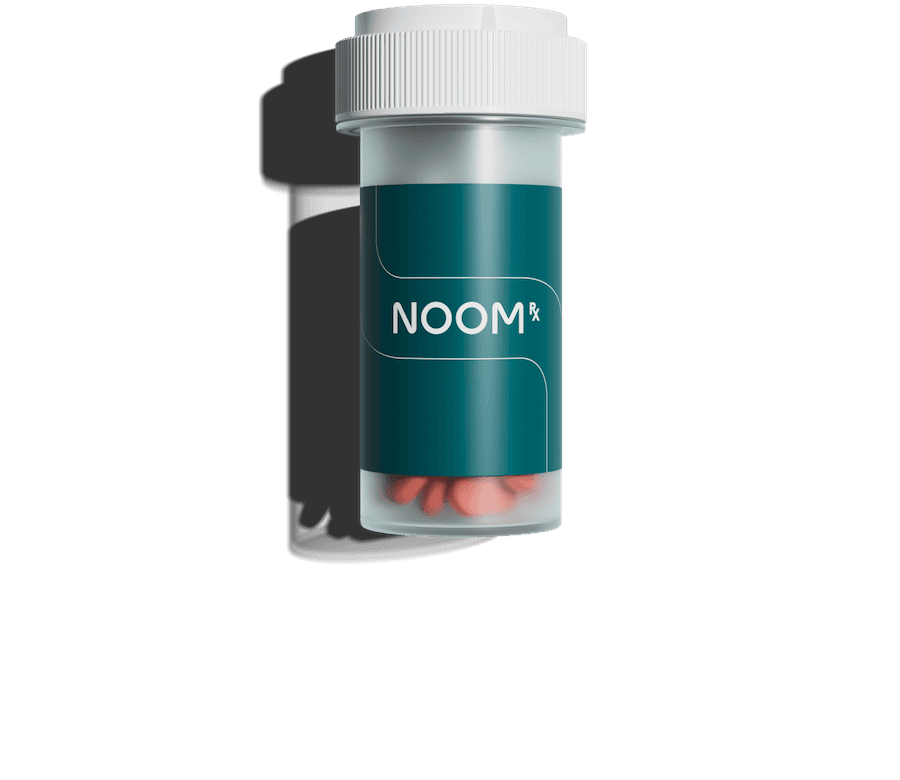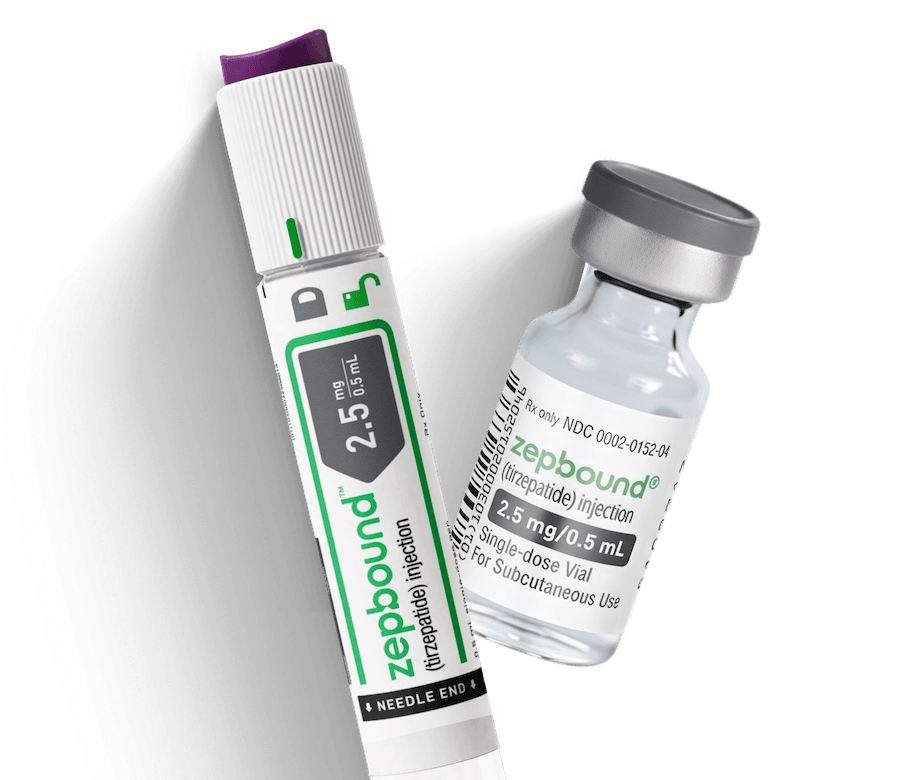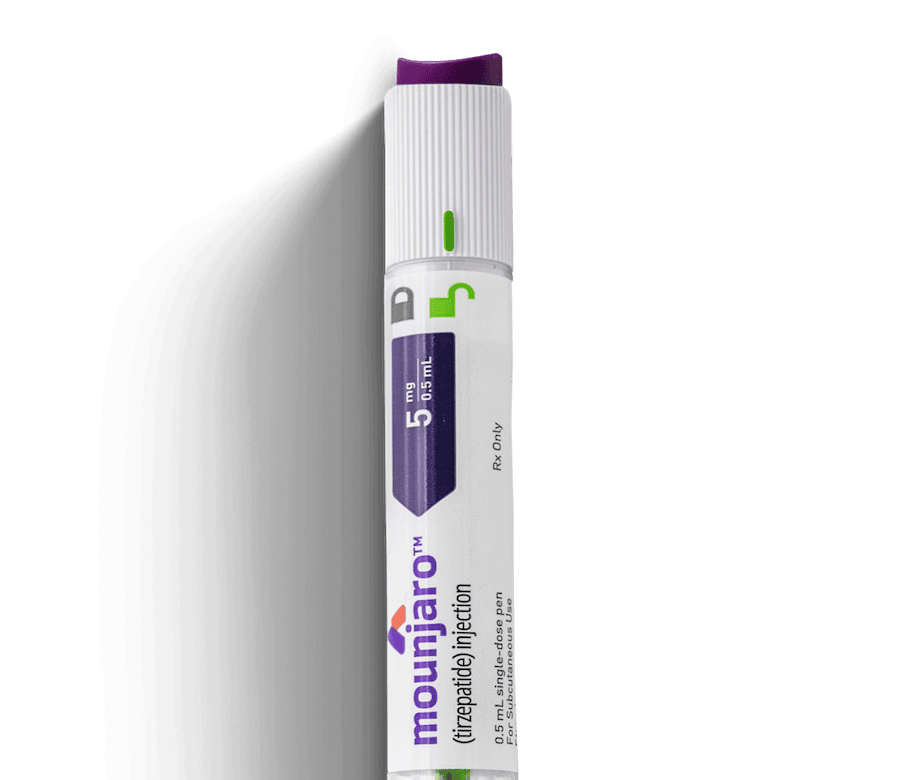What you’ll learn:
- Jardiance® is designed to manage type 2 diabetes, support heart health, and manage kidney disease. Some people also take it off-label for weight loss.
- It works by helping the kidneys remove excess glucose from the body through urine, which lowers blood sugar levels.
- Side effects tend to be mild and include more frequent urination, thirst, or urinary and genital infections, and can be managed at home.
As weight-loss medications have surged in popularity, fueled largely by the success of Ozempic®, many people are taking a closer look at other diabetes treatments that may offer similar benefits off-label. One of those is Jardiance®, a prescription medication that’s been used for more than a decade to help manage type 2 diabetes, improve heart health, and protect kidney function.
The FDA first approved Jardiance® in 2014 to help people with type 2 diabetes lower their blood sugar levels. Since then, research has shown it can also reduce the risk of cardiovascular death in people with diabetes and heart disease, and slow the progression of kidney damage. Because of how it works in the body, helping the kidneys remove excess glucose through urine, some people have started exploring it for off-label weight loss, even though it’s not officially approved for that purpose.
But the way Jardiance® helps sugar leave the body through your urine can lead to some side effects. Most are mild and manageable, like increased urination, thirst, or minor urinary and genital infections, but a few are more serious and require prompt care. Plus, as you’ll see, Jardiance isn’t all that effective for weight loss, compared to some other medications.
Let’s go through what you need to know about taking Jardiance®, from the most common side effects to practical ways to manage them. Plus, we’ll discuss the serious side effects and other important safety information.
How Jardiance® affects your body
Jardiance® (empagliflozin) is a sodium-glucose co-transporter 2 (SGLT-2) inhibitor, which means it blocks a specific protein (SGLT-2) in your kidneys that usually recaptures glucose from your urine and sends it back into your bloodstream.
When Jardiance® blocks this protein, your kidneys can’t reabsorb as much glucose, so the extra sugar and the calories it contains get flushed out of your body through urine instead of staying in your blood. This process helps lower blood sugar levels and may also lead to modest calorie loss (240 to 400 calories a day), contributing to gradual weight reduction over time.
How much weight can someone lose with Jardiance®?
Clinical trials have measured average weight loss with Jardiance® in people who use it for diabetes. Results vary slightly depending on dose:
- Jardiance® (10 mg): Average loss of about 2.8% of starting body weight, which equals 7 pounds for someone weighing 250 pounds.
- Jardiance® (25 mg): Average loss of about 3.2% of starting body weight, or 8 pounds in a 250-pound person.
While that isn’t a significant amount of weight, everyone responds differently. The best results tend to come when the medication is paired with balanced eating, regular activity, and other healthy habits.
Jardiance®: Most common side effects
Most people tolerate Jardiance® well, but like any medication, it can cause side effects. In clinical trials, the most commonly reported issues were related to how the drug works in the kidneys, flushing extra glucose out through urine.
These side effects are usually mild, often improve with time, and can be managed with simple strategies.
Increased urination
- Why it happens: Jardiance® helps remove excess glucose through urine, which naturally increases bathroom trips.
- What to do: Plan ahead for more frequent urination and stay hydrated to replace lost fluids.
Thirst
- Why it happens: Fluid loss from frequent urination can leave you feeling dehydrated.
- What to do: Drink water regularly throughout the day and avoid excess caffeine or alcohol, which can worsen dehydration.
Genital yeast infections
- Why it happens: Higher sugar in the urine creates an environment where yeast can grow, especially in warm, moist areas.
- What to do: Practice good hygiene, wear breathable clothing, and seek over-the-counter treatments if needed. Talk to your provider if infections keep coming back.
Urinary tract infections (UTIs)
- Why it happens: The same mechanism that flushes out sugar can also raise the risk of UTIs.
- What to do: Watch for burning, urgency, or cloudy urine. Stay hydrated and see your provider if symptoms don’t improve.
Dizziness or fatigue
- Why it happens: Extra fluid loss can lower blood pressure temporarily, which may make you feel lightheaded or tired.
- What to do: Stand up slowly, drink plenty of fluids, and let your provider know if these symptoms continue.
Low blood sugar (hypoglycemia)
- Why it happens: Jardiance® alone rarely causes low blood sugar, but the risk goes up when combined with insulin or sulfonylureas.
- What to do: Know the signs, shakiness, sweating, or confusion, and keep a quick source of sugar on hand if you use other diabetes medications.
Side effects of stopping Jardiance®
Unlike some medications, Jardiance® (empagliflozin) does not cause withdrawal symptoms when you stop taking it. There’s no evidence of dependence, cravings, or rebound effects.
People taking it to manage diabetes are likely to see some side effects. The most important change to expect is a rise in blood sugar, since your kidneys will go back to reabsorbing more glucose instead of passing it out in urine. This can also mean higher A1C levels or a return of symptoms like increased thirst and fatigue. If you’ve been using it for heart or kidney health, those protective effects also stop.
That’s why it’s important not to discontinue Jardiance® on your own. Always talk with your healthcare provider so they can guide you on alternatives and adjust your plan safely.
Do females experience different side effects with Jardiance®?
Some side effects of Jardiance® are more common in women than in men, especially urinary tract infections (UTIs) and genital yeast infections.
- Urinary tract infections: In clinical trials, UTIs were reported in about 18.4% of women on Jardiance® 10 mg and 17% on 25 mg, compared with 16.6% on placebo. Among men, rates were much lower: 3.6% (10 mg) and 4.1% (25 mg) versus 3.2% on placebo.
- Genital yeast infections: These occurred in 5.4% to 6.4% of women taking Jardiance®. In men, they appeared in 1.6% to 3.1% on Jardiance®.
These infections can cause burning with urination, itching, or unusual discharge. They’re usually mild and respond to treatment, but it’s important to talk to your provider if they recur.
Pregnancy and breastfeeding require special caution. Jardiance® is not recommended during pregnancy because animal studies suggest it could harm developing kidneys. It should also be avoided while breastfeeding, since the drug can pass into breast milk and potentially affect the baby.
If you’re pregnant, planning to become pregnant, or nursing, your provider will guide you toward safer alternatives for blood sugar management.
Jardiance®: Severe side effects and warnings
Like other SGLT2 inhibitors, Jardiance® helps lower blood sugar by helping your body remove extra glucose through urine. While it’s generally well-tolerated and offers benefits for heart and kidney health, it can occasionally cause serious side effects that require immediate medical attention.
Understanding what to watch for can help you act quickly and avoid complications. Here’s what to keep in mind:
- Diabetic ketoacidosis (DKA): Symptoms include nausea, vomiting, stomach pain, tiredness, trouble breathing, or fruity-smelling breath. Get immediate medical attention.
- Dehydration: Signs include dizziness, fainting, lightheadedness, weakness, or a sudden drop in kidney function. Older adults, people with kidney problems, or those taking water pills are at higher risk.
- Serious urinary tract infections: Some infections can spread to the kidneys and require hospitalization. Watch for painful or frequent urination, fever, back pain, nausea, or blood in the urine, and get emergency medical care.
- Low blood sugar (hypoglycemia): The risk is higher if you also take insulin or sulfonylurea medicines. Symptoms include shakiness, sweating, dizziness, confusion, headache, fast heartbeat, or irritability. Contact your doctor if symptoms don’t improve.
- Necrotizing fasciitis (Fournier’s gangrene): This is a very rare but life-threatening infection of the tissue around the genitals. Signs include pain, swelling, redness, fever, and feeling weak or unwell. Seek immediate medical attention.
- Serious allergic reactions: Stop taking Jardiance® and seek emergency help if you develop rash, hives, swelling of the face, lips, tongue, or throat, or trouble breathing.
Who shouldn’t take Jardiance®?
Jardiance® can be a helpful option for many people, but it isn’t safe or recommended in certain situations. You should not take Jardiance® if any of the following apply to you:
- Type 1 diabetes or history of ketoacidosis: Jardiance® is not approved for type 1 diabetes and may increase the risk of diabetic ketoacidosis.
- Severe kidney problems: Jardiance® isn’t recommended if you have certain types of chronic kidney disease, such as polycystic kidney disease.
- Pregnancy or breastfeeding: Jardiance® isn’t to be used while pregnant or breastfeeding.
- History of allergic reaction to Jardiance® or its ingredients.
Other factors may require extra caution:
- Older adults (65+): Higher chance of dehydration or kidney-related side effects.
- Frequent urinary or genital infections: Jardiance® increases sugar in the urine, which can make these more likely.
- Low blood pressure or dehydration risk: Jardiance® can increase urination and lower blood pressure, sometimes leading to dizziness or fainting.
- History of amputation or circulation problems in the legs or feet: SGLT2 inhibitors, including Jardiance®, may increase the risk of amputations.
- Upcoming surgery, heavy alcohol use, or changes in diet: These can raise the risk of ketoacidosis, so your healthcare provider may pause Jardiance® temporarily.
Always share your complete medical history with your healthcare provider before starting Jardiance®. This includes kidney or liver problems, infections, diet changes, alcohol use, or any other medications you’re taking. That conversation ensures Jardiance® is safe and effective for you.
Rx weight loss, the right way, with Noom
Get access to prescription weight loss medication with Noom.How to manage the side effects of Jardiance®
Here are some simple strategies to help your body adjust while taking Jardiance®:
- Stay hydrated: Jardiance® increases urination, so it’s important to replace lost fluids. Aim for 8 to 10 glasses of water a day, and keep a water bottle nearby to sip throughout the day. Staying hydrated helps prevent dizziness, fatigue, and dehydration.
- Practice good hygiene: Extra sugar in the urine can raise the risk of urinary tract and yeast infections. Daily hygiene, especially in the genital area, can lower your risk and keep you more comfortable.
- Take it at the right time: Most people take Jardiance® in the morning. This can reduce nighttime bathroom trips and improve sleep. If frequent urination still interrupts your rest, ask your provider if adjusting timing could help.
- Eat balanced meals: Regular, nutritious meals help stabilize blood sugar and may reduce digestive discomfort. Build your plate with lean protein, fiber-rich foods, and healthy carbs to support overall health.
- Listen to your body: Pay attention to new or changing symptoms, especially in the first few weeks. If side effects last longer than a month or become bothersome, let your healthcare provider know.
Comparing Jardiance® and GLP-1 medications
Jardiance® (empagliflozin) and GLP-1 medications (such as semaglutide and tirzepatide) can help you lose weight, but they act differently in the body. Jardiance® works through the kidneys, while GLP-1s work mainly in the digestive system and brain. These differences explain why their side effects don’t look the same.
Here’s a general guide based on how often side effects appear in clinical trials:
Jardiance® works by helping your kidneys remove extra glucose through urine. Because of this, its side effects are more likely to affect the urinary tract and hydration levels, like increased urination, thirst/dehydration, urinary tract infections, and genital yeast infections.
Semaglutide (Ozempic® / Wegovy®) and tirzepatide (Zepbound® / Mounjaro®) work differently. These medications mimic hormones that help regulate appetite, slow digestion, and regulate blood sugar. They often cause nausea, vomiting, diarrhea, and constipation, especially when starting or increasing the dose.
Weight loss potential: Jardiance® vs. GLP-1 medications
When considering side effects, it also helps to look at the weight loss results you can realistically expect. Jardiance® tends to provide limited weight loss, while GLP-1 medications are more effective.
The data below comes from clinical trials using the maximum approved doses:
| Medication | Effectiveness |
|---|---|
| Jardiance® (10–25 mg) | 3% (24–76 weeks) |
| Semaglutide (2.4 mg) – Wegovy® | 15% (68 weeks) |
| Tirzepatide (15 mg) – Zepbound® | 21% (72 weeks) |
Frequently asked questions about Jardiance®
Here are quick answers to some of the most common concerns about Jardiance®.
How quickly do you lose weight on Jardiance®?
Weight loss is gradual and modest, averaging about 2.5% to 5% of body weight over 6 months to 3 years. It’s considered a secondary benefit, as Jardiance® is mainly for blood sugar control.
How long do Jardiance® side effects last?
Most side effects, like increased urination, thirst, or mild infections, appear in the first few weeks and often improve within 4 to 8 weeks.
How much is Jardiance® a month?
Around $630 per month without insurance. Costs may be lower with insurance, coupons, or discount programs.
Is there a generic for Jardiance®?
No. A generic isn’t yet available in the U.S., as Jardiance® remains under patent protection.
The bottom line: Jardiance® isn’t ideal for weight loss
While Jardiance® can lead to some weight loss, it’s not designed for that purpose, and the results are modest compared to GLP-1s and other weight loss medications. Its main role is managing blood sugar, heart, and kidney health in people with type 2 diabetes.
Most side effects, like increased urination or thirst, are mild and manageable, but they’re still important to consider if your primary goal is losing weight.
If you’re looking for a medication to help you lose weight, see if you qualify for Noom Med. You’ll be connected to licensed clinicians who can assess which prescription weight-loss medication is right for you, and prescribe it if needed. Combined with Noom’s habit-building tools and behavioral coaching, you’ll get a program designed to help you lose weight safely and sustainably.
Why you can trust us
At Noom, we’re committed to providing health information that’s grounded in reliable science and expert review. Our content is created with the support of qualified professionals and based on well-established research from trusted medical and scientific organizations. Learn more about the experts behind our content on our Health Expert Team page.


